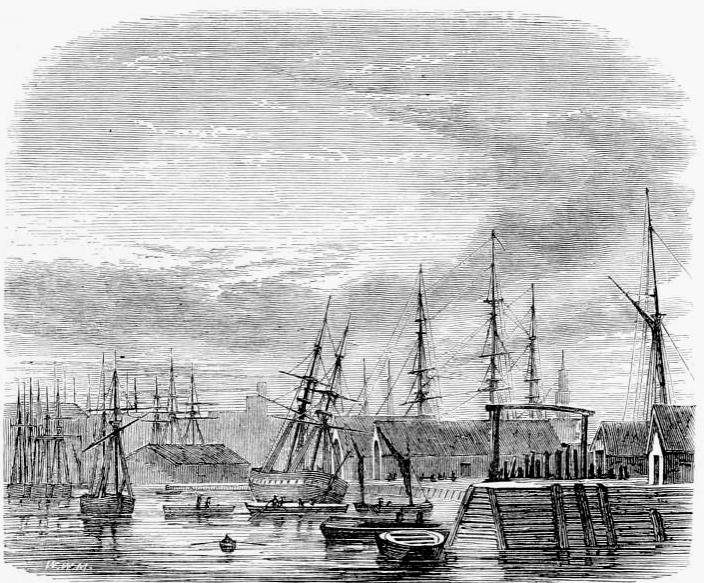
Entrance to the West India Docks. 1859. Engraving of a drawing by Walter W. May, R.N. From The Book of the Thames from its Rise to its Fall, p. 471. Text and formatting by George P. Landow. [You may use this image without prior permission for any scholarly or educational purpose as long as you (1) credit the University of Pittsburgh and the Internet Archive and (2) link your document to this URL in a web document or cite the Victorian Web in a print one.]
The Halls on the West India Docks
These are said to be the largest in the world. They are nearly three times as extensive as the London Docks, and include about 290 acres. The Import Dock, to the north, can accommodate 200 vessels of 300 tons each; and the southern, or Export Dock, can hold 195. They were commenced in the year 1800, Jessop being the engineer, and opened two years afterwards. They occupy the whole length of the back of the Isle of Dogs, from Limehouse to Blackwall; their tall warehouses and tiers of ships rise boldly above its level, and form a striking background as we pass them on the Thames. The canal which cuts across it is nearly three quarters of a mile long, with lock-gates at each end 45 feet in width; it is now chiefly used as a dock. [473-74]
References
Hall, Samuel Carter, and A. M. Hall. The Book of the Thames from its Rise to its Fall. London: Arthur Hall, Virtue, and Cp., 1959. Internet Archive version of a copy in the William and Mary Darlington Memorial Libray, the University of Pittsburgh. Web. 10 March 2012.
Last modified 11 March 2012